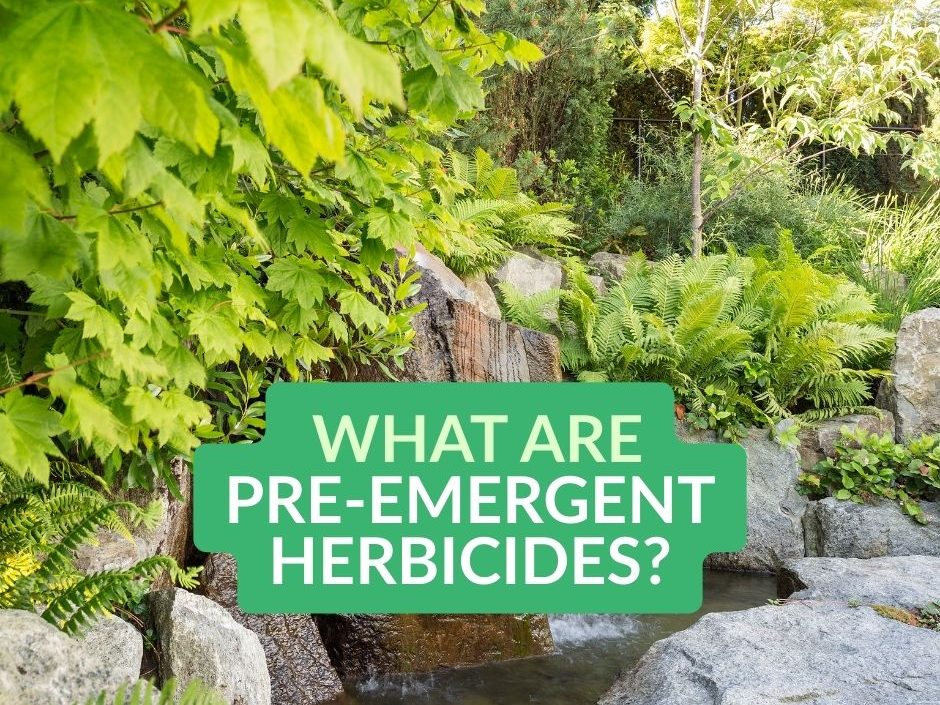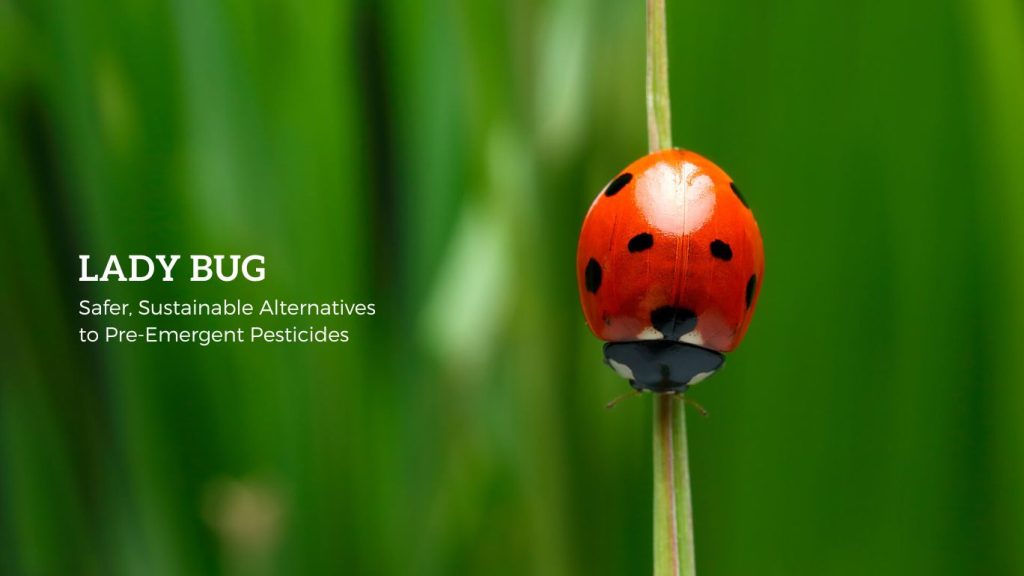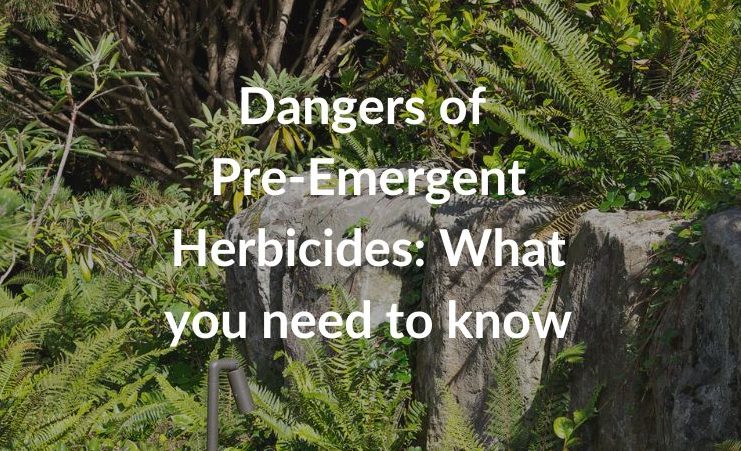Pre-emergent herbicides like Casoron are widely used by homeowners and landscaping professionals to prevent weeds before they sprout. While they offer convenience, these chemicals pose significant risks to soil health, water quality, plant vitality, and personal safety.
Before applying pre-emergents to your landscape, it’s essential to understand their long-term impact and explore sustainable, eco-friendly weed management solutions.
What Are Pre-Emergent Herbicides?
Pre-emergent herbicides work by creating a chemical barrier in the soil to prevent weed seeds from germinating. Popular products like Casoron are designed to stop weeds before they emerge, but their effects extend beyond unwanted plants – they impact the entire soil ecosystem, affecting microorganisms, water quality, and plant diversity.
While these chemicals may seem like a quick fix, their hidden dangers can lead to long-term damage to your landscape and the environment.

The Hidden Dangers of Pre-Emergent Herbicides
1. Degradation of Soil Health
Pre-emergent herbicides disrupt the natural balance of your soil. By targeting seed germination, they can also:
- Hinder the growth of beneficial plants.
- Harm microorganisms that promote nutrient cycling and soil structure.
- Leave your soil less resilient, leading to increased dependence on chemicals over time.
Healthy soil is the foundation of a thriving landscape, and using pre-emergents can compromise this critical resource.
2. Water Pollution Risks
Runoff from treated areas can carry pesticides like Casoron into nearby waterways, causing:
- Harm to aquatic ecosystems: Chemicals can disrupt the delicate balance of life in ponds, streams, and rivers.
- Groundwater pollution: Contaminants may seep into drinking water sources, posing risks to human health.
In regions like Vancouver, where sustainability is a top priority, limiting chemical use is essential for protecting water quality. Learn more about the risks of herbicide pollution from the Environmental Protection Agency (EPA)

3. Damage to Non-Target Plants
Pre-emergent pesticides don’t differentiate between weeds and desirable plants. Nearby flowers, shrubs, and trees can absorb these chemicals, leading to, leading to:
- Weakened root systems: Growth suppression makes plants more vulnerable to drought and disease.
- Stunted development: Some species fail to thrive, leading to barren, unbalanced landscapes.
- Potential plant death: Certain plants, especially young saplings and perennials, can be severely damaged by these chemicals.
Using pre-emergents can undermine efforts to cultivate a healthy, diverse garden.
4. Health Concerns for Humans and Pets
Many pre-emergent herbicides contain harmful chemicals that pose risks to people and animals, including:
- Skin irritation: Direct exposure may cause redness, rashes, and allergic reactions.
- Respiratory problems: Inhalation of herbicide particles can trigger asthma and lung irritation.
- Increased risks for children and pets: Their smaller size and frequent ground contact make them more vulnerable to chemical exposure.
Safer, Sustainable Alternatives to Pre-Emergent Herbicides
A chemical-free approach to weed control isn’t just possible – it’s more effective in the long run. By implementing integrated weed management strategies, you can keep your landscape weed-free without harming the environment.
Eco-Friendly Alternatives Include:
- Proper Lawn Care: A dense, healthy lawn naturally suppresses weeds. Mow at the right height, fertilize appropriately, and aerate the soil for optimal grass growth.
- Mulching: A layer of organic mulch (like bark, straw, or compost) prevents weed growth while enriching soil health as it decomposes.
- Hand Weeding: While labor-intensive, manual weed removal is precise, immediate, and 100% chemical-free.
- Organic Solutions: Natural solutions like corn gluten meal can act as a pre-emergent alternative, while vinegar-based sprays target existing weeds.
- Biological Pest Control: Encouraging beneficial insects (like ladybugs) and companion planting helps keep unwanted plants and pests in check naturally
By focusing on these methods, we help create landscapes that are not only weed-free but also vibrant, diverse, and sustainable

Why Choose Eco-Friendly Weed Management?
Our team goes beyond conventional landscaping methods by emphasizing:
- Soil Health: We nurture living soils to enhance plant vitality and reduce chemical reliance.
- Protect Water Resources: Our practices prevent runoff pollution, preserving local ecosystems.
- Support Biodiversity: A balanced, eco-conscious landscape benefits native plants, pollinators, and wildlife.
Switching to sustainable weed control isn’t just about avoiding harm – it’s about creating a thriving, resilient outdoor space for generations to come.
Let’s Build a Greener Future Together
Pre-emergent herbicides may offer a short-term fix, but their long-term damage to soil, water, plants, and health isn’t worth the risk. By adopting natural, eco-friendly alternatives, you can maintain a vibrant, healthy landscape without compromise.
Want a weed-free garden – without harmful chemicals?
Contact us today to learn more about sustainable landscaping solutions that are safe for your home, family, and the environment. Read more to know about When is the Best Time to Start a Landscape Renovation Project.




 Contact Us
Contact Us